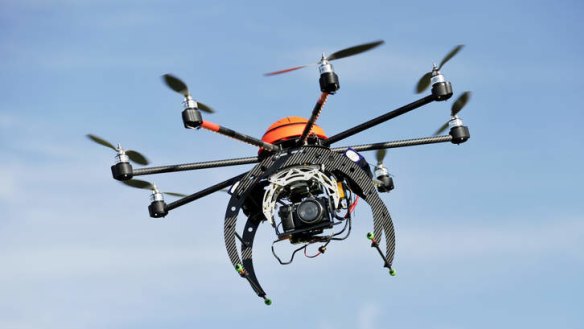Taco drone could take fast food to new heights

Washington: The next time you feel the urge for fresh Mexican food, just look up. A taco-toting drone may be circling.
Researchers at the Darwin Aerospace laboratory in San Francisco have designed the Burrito Bomber, the world's first airborne Mexican food delivery system, which would allow customers to have food parachuted right to their doorstep.
As fun as they may be to think about, such ideas are unlikely to be realised any time soon. The US Federal Aviation Administration likely will not decide until 2015 on the regulations to integrate burrito-bearing drones into urban airspace. But the potential of a booming domestic drone industry for commercial purposes has entrepreneurs seeing dollar signs. A far stretch from the military strikes that most people typically associate with drones, developers have begun hatching a litany of ideas for unmanned aerial systems in the commercial sphere, controlled by civilians in American skies.
From conservation efforts and crop monitoring to Hollywood filmmaking and, of course, food delivery, experts anticipate the value of the commercial drone industry, already worth almost $US14 billion ($13.6 billion) a year, to skyrocket to more than $82 billion by 2025, said Mario Mairena, government relations manager for the Association for Unmanned Vehicle Systems International, which lobbies on behalf of the drone industry.
''And that's a conservative estimate,'' Mr Mairena said. ''We're excited about where the industry is at right now.''
Although opponents decry the Big Brother-like intrusion of thousands of remote cameras roaming the sky, Mr Mairena said the industry could create as many as 70,000 jobs in the first three years after the Federal Aviation Administration releases guidelines to integrate unmanned systems into national airspace, scheduled for 2015. A recent Association for Unmanned Vehicle Systems International report claims that for every year commercial drone integration into the national airspace is delayed, more than $US10 billion in economic potential is lost.
Chris Anderson, co-founder of drone manufacturer 3D Robotics, said he expects the commercial drone market to boom once it gets clearance to enter the skies.
''Maybe the most exciting thing is that we don't yet know all the ways this technology is going to mature,'' he said.
''It's really reshaping the way we think about farming, among other things,'' Mr Anderson said. Using camera-equipped drones to monitor crops could save money, he said, with $US300 UAVs to check for disease and irrigation levels replacing $US1000-an-hour manned aircraft flyovers.
Hollywood is also in on the push for commercial drone licensing. Howard Gantman, spokesman for the Motion Picture Association of America, said the film industry has been lobbying for years for the right to use unmanned aircraft for aerial filming. ''It's safer than putting a camera operator up in a tall tree; it's cheaper than renting a helicopter for a day,'' he said.
MCT
Restaurant reviews, news and the hottest openings served to your inbox.
Sign up- More:
- Restaurant news